How to build positive e-commerce experiences in a world of higher expectations
Written by
Editorial TeamPublished on

Ecommerce has become an incredibly competitive sector over the past two years. Covid-19 forced many companies to accelerate their digital transformation and, at the same time, digital literacy has increased among customers of all ages and backgrounds. Today’s customers don’t only look for a great experience, they take it for granted.
This trend is here to stay, expanding from a purely digital experience to retail and social shopping. Omnichannel is becoming the ‘new normal’, raising the bar through the whole bandwidth of a company’s service offering.
While this is an enormous challenge for businesses, there are also great opportunities to make effective wins through differentiation. And cost doesn’t seem to be an issue: according to Forrester, 86 percent of customers are willing to pay more for a better customer experience that seamlessly matches their lifestyles.
What is customer experience anyway?
There are many definitions circulating, but at their core, they all come down to how a person feels about the experience of interacting with a brand or service. The general goal of CX is to motivate and delight people during the entire course of the interaction.
According to Forrester’s CX Index, there are three dimensions to the perceived quality of customer experience: effectiveness, ease, and emotion. While all of them are important to build a company’s reputation and maintain its relevance, one of the three significantly trumps the other two when it comes to long-term success: emotion.
Effectiveness (ensuring customers get what they come for) and ease (making sure they get it in the most agreeable, hassle-free way) are fairly straightforward constructs. Emotion, however, is a more complex challenge. Many companies and executives have a hard time grasping what it is, let alone translating into tangible action.
The empathy gap
Understanding customers’ emotions is a crucial step when building CX, which 72 percent of the 201 business executives surveyed by Harvard Business Review Analytic Services in 2021 agreed on.
Yet only 35% of these companies’ customers agreed that the companies understand them to varying degrees. Another study by Capgemini showed similar results: about three-quarters of organisations think they are customer-centric, while a mere 30% of customers believe this to be the case.
We call this phenomenon the ‘empathy gap’. It’s a term that addresses the incapacity to relate to the emotions, needs and feelings of a counterpart. Most of us have experienced painful situations caused by a lack of empathy; for a business, this can have severe consequences.
On the flip side, if customers feel understood, they’ll be more likely to advocate for a brand (73%) and spend more (70%), as Forrester’s 2021 European Customer Experience Index stated. Empathy is also a decisive driver for great leaders and overall career success, making it an extremely important capability in today’s professional life.
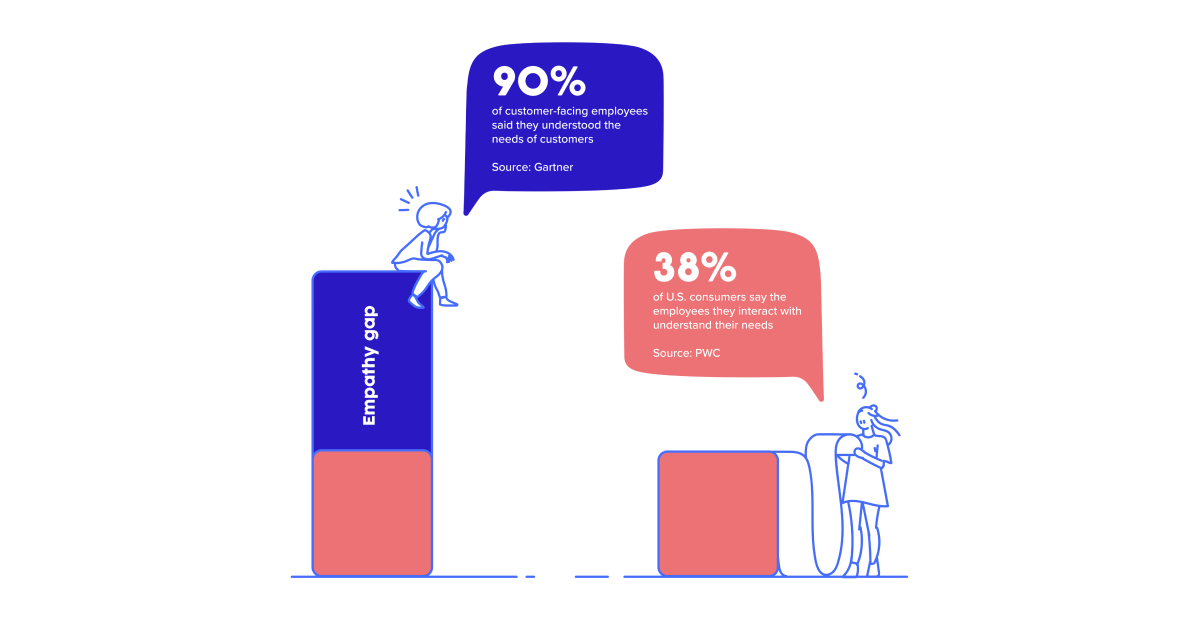
So how can brands close the gap and become more empathic?
Understanding the ‘why’
The first step to finding out how a customer or person feels is simple: ask them!
There’s a large choice of methods to collect customer feedback: website surveys, website feedback, analytics, pulse surveys, contact forms, social media surveys, UserTesting software, and more. Huge amounts of data can be collected online, providing insights on customer satisfaction levels and potential correlations between a company’s products, services and positioning.
The benefit of this data is that it’s usually easy to collect, scale and transform into tangible figures as a basis for decision-making. Quantitative research, however, has one major flaw: it doesn’t explain the underlying circumstances, context and individual perceptions behind customer behaviour.
In other words, it describes ‘what’ is happening, but fails to explain ‘why’.
Looking behind the numbers
To paint a complete picture, it’s crucial to collect qualitative data as well. Common methods include personal interviews, focus groups, observations, or frontline encounters. They are all based on a direct, interpersonal exchange that allows brands to put themselves into their customers’ shoes and see the company through their eyes.
What we refer to as ’human insight’ is the key to understanding why an organisation’s strategy might not align with audiences’ needs and priorities, yet it is often overlooked in CX and marketing research.
Rishad Tobaccowala, senior advisor to the advertising firm Publicis Groupe and author of ‘Restoring the Soul of Business: Staying Human in the Age of Data’ explained to Harvard Business Review Analytic Services: “Most… data is obsolete. By talking to customers and observing them, you see things in their behaviour that will never be captured in the data. You’ll get some emotions, and then you can quiz the emotions. You can ask them to explain why they did what they did.”
Business leaders surveyed on the same occasion backed this statement: 86% agreed somewhat or strongly that it is difficult to get a complete understanding of their customers from analysing data alone, while 75% agreed similarly that their organisation would understand customers better if they spent more time talking with them face to face.
Taking a deeper dive into how the interviewee’s companies currently collect feedback, it also turned out that the most frequently used methods did not overlap with what the participants found the most useful. Choosing from 13 methods, customer surveys (91%), social media listening (82%), and contact forms on company websites or mobile apps (79%) were named as the most common ones. The methods rated as most effective, however, were one-on-one interviews (72%), customer observations (69%), and data analytics and/or artificial intelligence (67%). All of them involve direct or near-direct engagement with customers.
At the same time, the methods that respondents were most likely to use to understand the customer experience were rated as considerably less effective than the highest-rated methods. Customer surveys were deemed very or extremely effective by 59% of respondents, social media listening by 50%, and contact forms by 36% of respondents who used them.
The human touch
We live in a digital age, where people are used to purchasing any sort of product online. The Analytic Services Report by Harvard Business Review revealed, however, that 58% of the surveyed consumers somewhat or strongly agree that most companies today have lost their ‘human touch’.
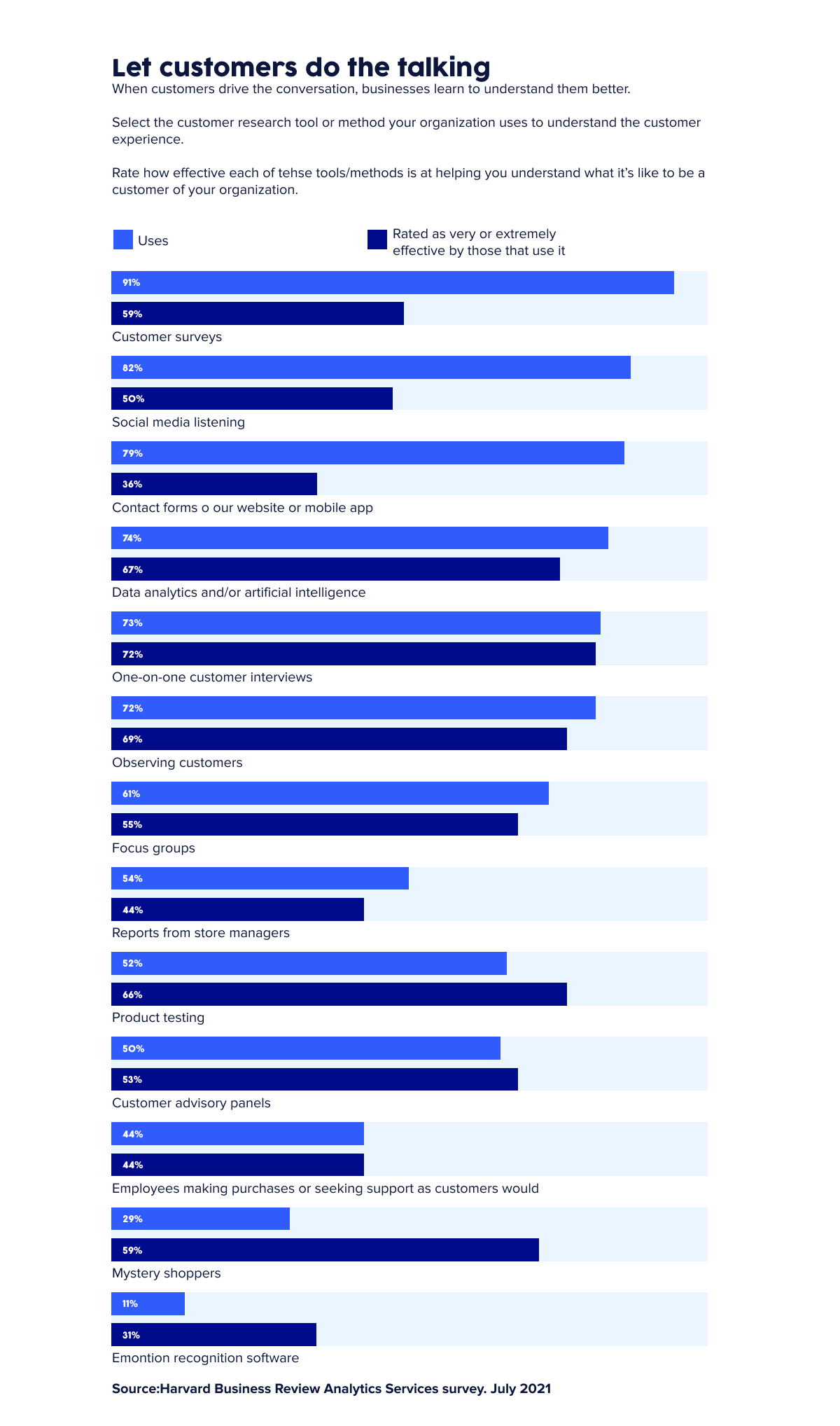
Customers, including Gen Z’s ‘digital natives’, are somewhat saturated by digital experiences and crave real human interaction, even more so after almost two years of social distancing.
With billions being invested in digital transformation, this is tricky to tackle from a company’s point of view, especially for an e-commerce business that operates in a digital bubble.
Yet there might be a pretty straightforward way to address the issue: getting an actual human involved.
This starts by implementing human insight as a core staple of CX strategy. Fortunately, this does not mean investing big budgets into lab studies and participant recruitment anymore. Through video technology and other digital tools, personal interviews, user case scenarios, and even focus groups, can be done remotely.
While many customer-centric companies have only recently started to rely on remote research, a survey conducted in the scope of UserTesting’s 2021 CX Industry Report pointed out that a lot of these teams expect these methods to remain relevant, even as people return to physical workplaces. Tested and approved as highly efficient, remote qualitative research is becoming a fundamental pillar to customer insights.
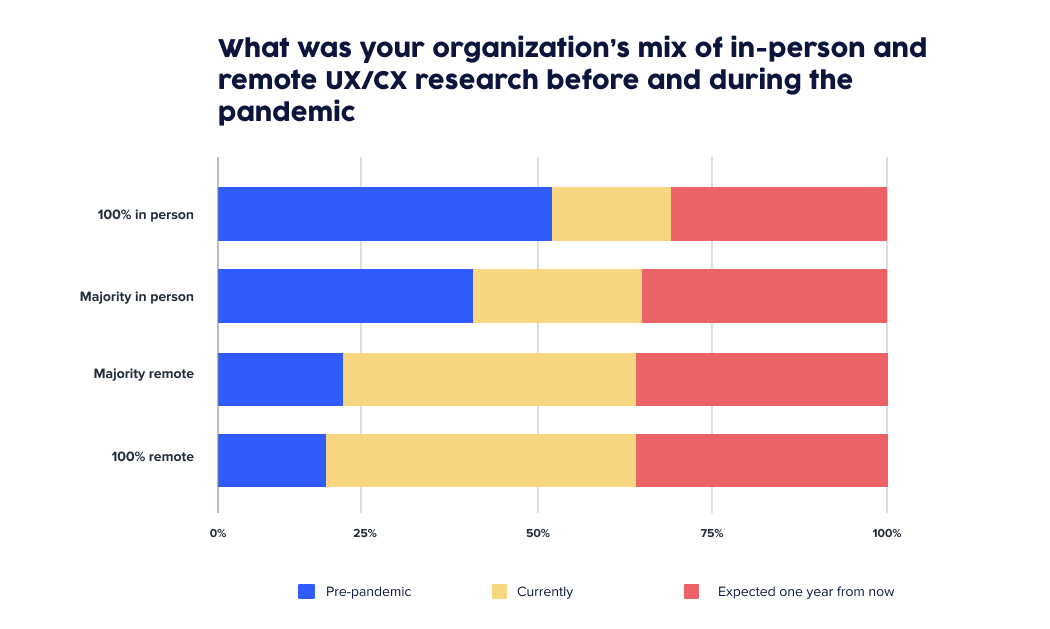
Human interaction in a digital sphere
There are also different business practices on the intersection of the digital and ‘real’ world that enable companies to directly connect with customers without physically meeting them. They include:
- Live chat: while chatbots are constantly improving, these AI-powered agents often fail to meet the needs and expectations of customers. In Germany, this is particularly striking with 9 out of 10 customers reporting a negative experience with a chatbot. Offering the possibility to exchange with a real person via live chat leads to positive emotions and higher levels of satisfaction, as Forrester’s European Customer Experience Index 2021 pointed out. The study evaluated CX in five European countries (Germany, France, Italy, Spain, and the UK) and showed that this form of digital human-to-human exchange builds trust and the feeling of being ‘understood’. This is one of the strongest drivers for customer loyalty in Germany, as well as being ‘valued’ and ‘respected’.
- Telephone support: depending on industry sector and target group, going the extra mile and adding an open line for phone support can be a great addition. German customers particularly value the opportunity to have a ‘real person’ to talk to and sometimes a conversation over the phone can be much more efficient than lengthy written exchanges and therefore outweigh the extra investment. What’s more, telephone conversations are a great addition to employees’ efforts to collect feedback and keep an open loop with customers.
Omnichannel integration: a seamless experience across all channels – website, app, social media, customer service – is one of the major differentiators that sets CX leaders, including Apple, Nike and Starbucks, apart. A first step to achieving this is by encouraging a high level of proactive exchange and transparency between different departments and regularly reviewing consumer feedback and strategy together.
As UserTesting’s Inaugural Empathy Experience Index (EXi) revealed, customer empathy needs to be present throughout the entire customer journey. By fostering an empathy-driven culture across all business units, organisations are able to deliver the best possible customer experiences.
Leading brands understand they need to go beyond multichannel or omnichannel strategies and focus on their experience strategy.
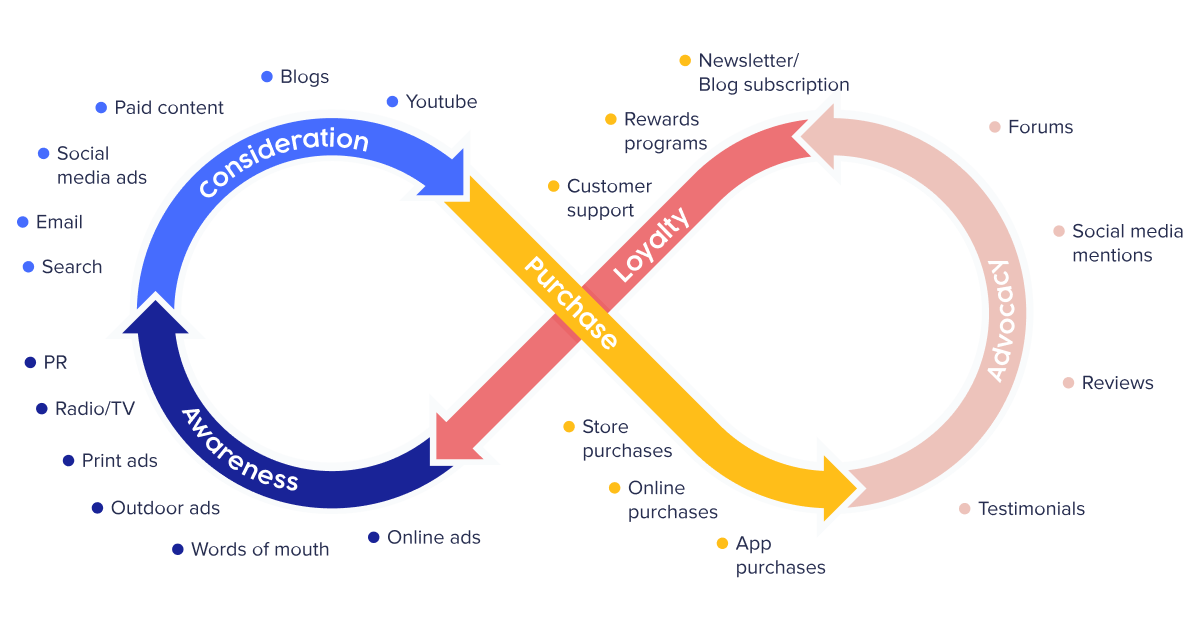
Great customer experience = great employee experience
Another distinct differentiator of outstanding customer experience providers is that they build on a strong company culture driven by engaged and fulfilled employees. By fostering positive, emotional connections between the company and its employees, the people representing your brand on a daily basis will be much more likely to make it look good and deliver a great experience to your customers. This kind of connection often grows stronger when employees feel recognized for their efforts, which is why many e-commerce companies turn to employee rewards software to build a culture of appreciation and loyalty.
According to a study by the Temkin Group, companies that offer great CX have employees that are 1.5x more engaged than those who have less satisfactory customer experience.
The core value for building a great employee experience is empathy. By centering a business model around empathy-driven human insights, both internally and externally, there is a clear path to delivering excellent customer experience. On top of it, you may want to take a look at employee leasing quotes.
Quantifying human insight
Despite the benefits of qualitative research and direct feedback channels, many companies still shun away from making it a focus within their CX strategy. Reasons may vary from a lack of time and resources to a preference for digital data.
“Dealing with people is messy,” says book author Tobaccowala. “It’s also more expensive. Business leaders are driven by the input cost, not by what they want as an outcome. They say, ‘We have to do this research under this budget.’ They don’t say, ‘You have to do great research, how much will it cost?’”
The ROI of human insight, can nonetheless be quantified, and shows impressive results: In a 2020 study conducted by Forrester, companies that have started to deploy remote, qualitative research through UserTesting’s Human Insights Platform, reported increased conversion rates (0.5% per year), higher customer spending ($7 per customer/year), and notable financial savings due to reduced time spent on the creation of marketing materials (59%). What’s more, the overall costs of customer insights were lowered by an average of 70% compared to previous research designs, including lab testing.
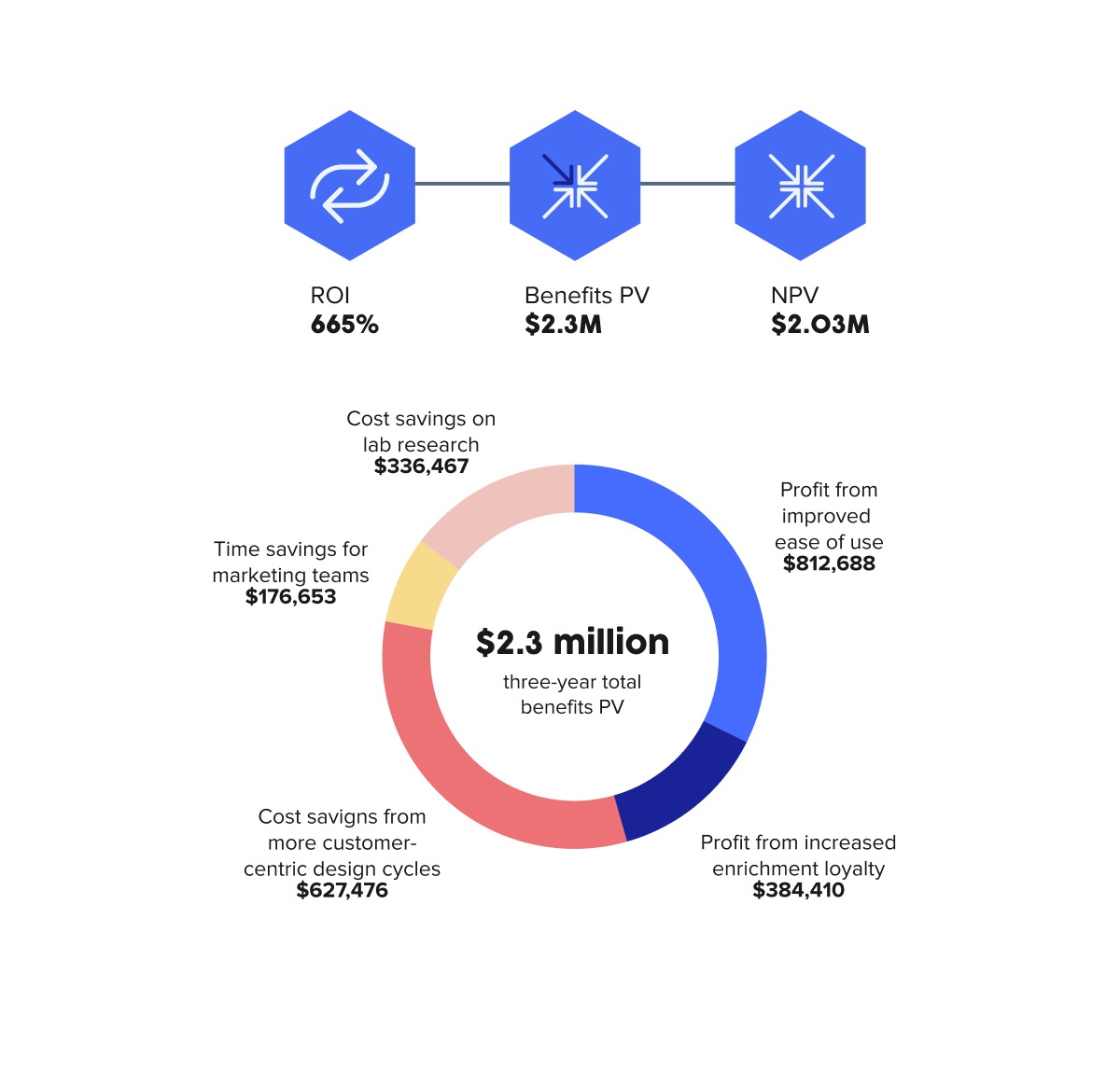
Of course, there are also huge advantages that go beyond numbers and include increased customer satisfaction and a company’s image and brand awareness. All of that is hard to put into a database, yet invaluable for building a positive experience.
Rishad Tobaccowala commented: “We have to recognise that so much of what we do, what we learn, and what we decide is based on emotion and not on maths.”
Time to get a little emotional.


